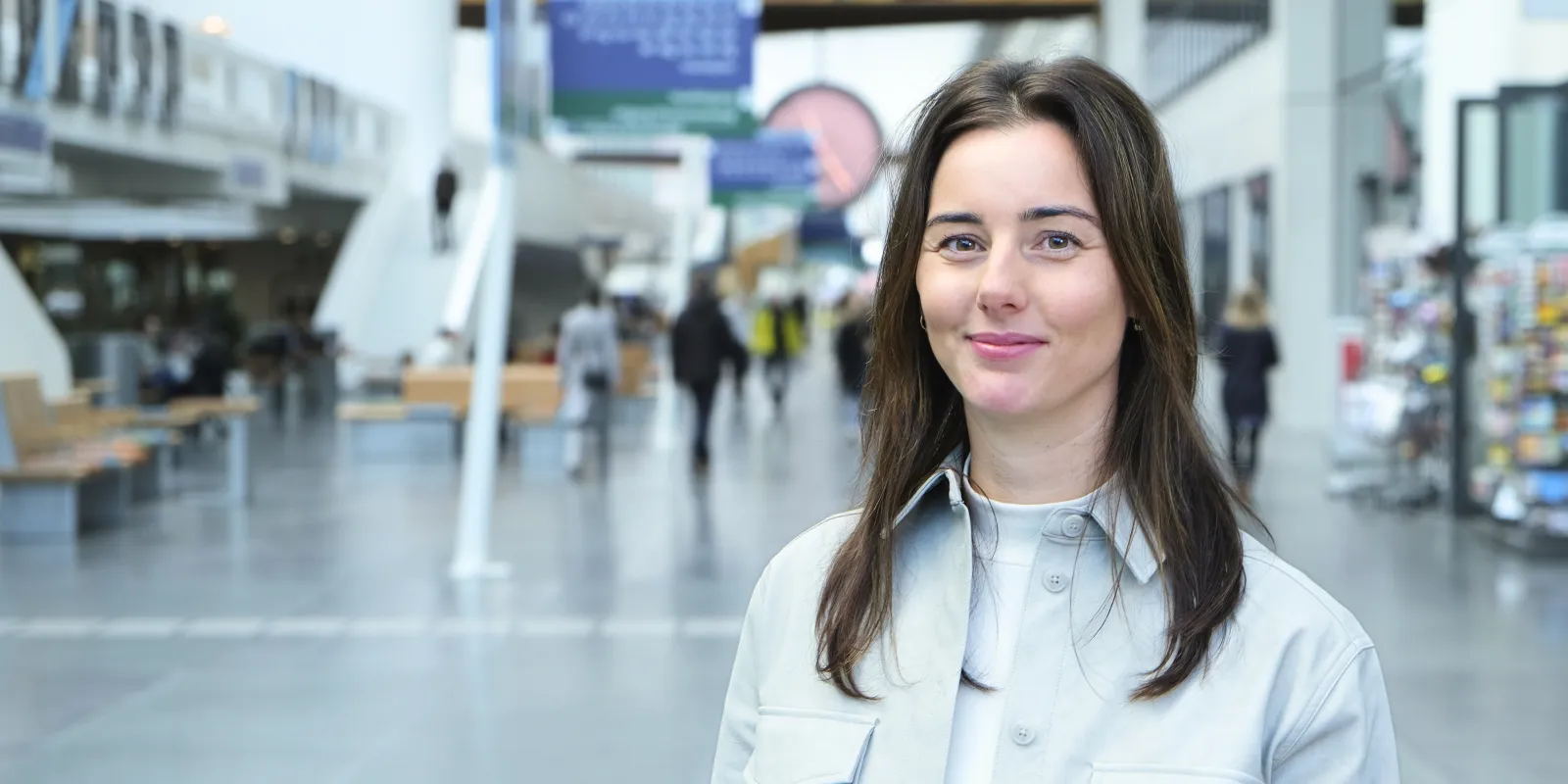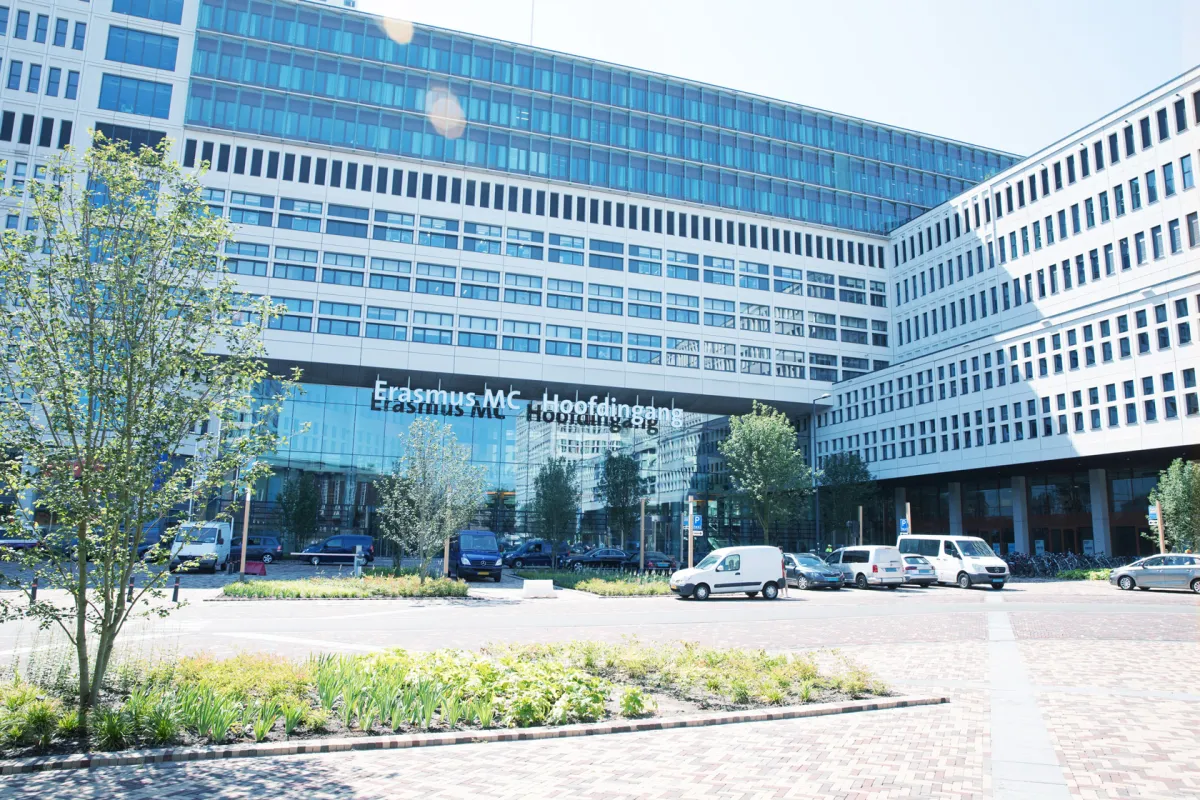
- All vacancies
-
Postdoc position (2 yr): Matrices in biofilms: role of S. aureus
Postdoc position (2 yr): Matrices in biofilms: role of S. aureus
Formation and structural characteristics of fibrin and NET matrices in biofilms: role of Staphylococcus aureus- Closing date 18-02-2025
- 330
- 32 - 36 hours
- PhD
- Research & Education
- Closing date 18-02-2025
- 330
Job description
Bacterial infections are projected to soon become the number one killer worldwide. A frequently involved bacterium is Staphylococcus aureus (S. aureus), which forms biofilms as a strategy for survival and persistence in the human host and as a reservoir for spreading to new infection sites. These biofilms contain both bacterial components (proteins, DNA, and polysaccharides) and host components. The main components originating from the human host are fibrin and neutrophil extracellular traps (NET). Fibrin and NETs normally play roles in blood clotting, wound healing and our immune response.
The fibrin network is normally formed by the blood coagulation cascade. In biofilms, S. aureus bacteria hijack the coagulation system and independently form a fibrin matrix using enzymes they secrete themselves, namely staphylocoagulase and von Willebrand factor binding protein (VWfbp). The S. aureus bacteria embed themselves in this self-manufactured fibrin matrix. S. aureus also triggers the formation of the second major network in biofilms, the NETs, consisting of the neutrophil’s DNA, histones and antimicrobial proteins. The natural function of this process is to trap pathogens and kill them.
The project involves a close collaboration between the hemostasis lab led by prof. Moniek de Maat at the Erasmus MC in Rotterdam, the biological soft matter lab led by prof. Gijsje Koenderink and the imaging lab of prof. Jacob Hoogenboom at the Delft University of Technology. The idea is to merge biophysical and imaging concepts and techniques with expertise in hemostasis and fibrin biochemistry in order to elucidate the mechanisms that control thrombus properties, with the ambition to use this knowledge to prevent or treat thrombo-embolisms.
You will construct model thrombi from plasma and reconstituted clots under controlled flow conditions, in order to obtain controlled combinations of fibrin and cells (platelets and/or red blood cells) You will use confocal and scanning electron microscopy in order to quantify the clot structure both at the network and fibre scale using custom-written analysis software from our groups. You will study the sensitivity of the clots to fibrinolysis as a function of clot composition using intrinsic and extrinsic clot lysis assays. You will determine the elastic properties of plasma and reconstituted clots as well as aspirated thrombi from patients using nanoindenter setups that are combined with fluorescence microscopy so local variations in mechanics can be mapped onto structure. For measuring the extensibility and rupture strain, you will use a tensile tester mounted on a confocal microscope, so we can visualize the mechanism of fracture and correlate it with the local network structure and composition. Finally, you will use all these techniques to measure the structure and mechanics of actual aspirated cardioembolic thrombi from stroke patients, which are available since the project is embedded within the CONTRAST consortium.
Work environment
A healthy population and excellent care through research and education. That is what Erasmus MC stands for. Erasmus MC is an international leading academic hospital. Erasmus MC staff, volunteers and students work with passion and dedication to achieve a safe, first-rate healthcare for patients with complex disorders, rare conditions or acute needs. Erasmus MC is recognized as a world-class scientific research organization aiming to improve our understanding of diseases and disorders and helps to predict, treat and prevent them. We do ground-breaking research, every single day. At Erasmus MC we believe that progress in medicine and health care is only feasible if fundamental biomedical research, clinical research and health sciences collaborate in close synergy.
At Delft University of Technology, you will find a multifaceted institution offering education and carrying out research in the technical sciences at an internationally recognized level. Education, research and design are strongly oriented towards applicability. TU Delft develops technologies for future generations, focusing on sustainability, safety and economic vitality. At TU Delft you will work in an environment where technical sciences and society converge. TU Delft comprises eight faculties, unique laboratories, research institutes and schools.
You will be embedded in three labs, namely the lab of prof. Moniek de Maat at Erasmus MC (your primary base, where clots will be made and studied by microscopy and biochemical assays), the lab of prof. Gijsje Koenderink at TU Delft (where all biophysical assays will take place) and the lab of prof. Jacob Hoogenboom at TU Delft (where the imaging facilities are). You will find an inspiring, supportive and collegial environment in both places.
The de Maat lab is a biochemical lab studying the biochemistry of hemostasis and thrombosis, with a special focus on fibrinogen characteristics. The levels and properties of fibrinogen and other coagulation factors are studied in a wide range of diseases, especially cardiovascular diseases. The de Maat lab is embedded in the department of Hematology, where clinical care and research work very closely together in understanding, amongst other, the delicate balance between bleeding and thrombosis. The hemostasis research group covers fundamental, translational and clinical research.
The Koenderink lab is an experimental biophysics lab studying the mechanobiology of cells and tissues. Our approach is to combine concepts and techniques from soft matter physics, biophysics, synthetic biology, protein engineering, and cell biology. We furthermore develop advanced measurement techniques that combine quantitative imaging with force measurements across length scales ranging from the cell/tissue level down to molecular scales. The Koenderink lab is embedded in the TU Delft department of Bionanoscience, which focuses on the fundamental understanding of biological processes from molecule to cell. The department features an inspiring, international environment with access to state-of-the art facilities for nanofabrication, a microscopy facility, molecular/cell biology, biochemistry, and high-performance computing for image processing. Current research areas in the department include single-molecule biophysics, synthetic biology, and (quantitative) cell biology.
The Hoogenboom lab studies new techniques for visualizing molecules, molecular functionality, and structural details. Many state-of-the art techniques are available (hyperresolution), and they specifically develop correlative microscopy, a combination of light and electron microscopy, physically integrated in a single instrument.
Qualifications and skills
We hire outstanding experimental scientists with a background in either Physics, Physical Chemistry, Biology/Biochemistry, or Bioengineering and a strong affinity for research at the interface of physics and biology driven by biomedical needs. Research experience in fields such as biophysics, soft matter science, biomaterials, and/or biomedical engineering is welcomed. We are looking for a candidate with a high level of intellectual creativity, genuine interest in fundamental research and biomedical impact, who is keen to work in an international and interdisciplinary team. Women are particularly encouraged to apply, as they typically make up a smaller fraction of the applicant pool.
Applicants must:
- Hold a PhD, or approach its completion, in Physics, Chemistry, (Bio)engineering, Materials science, Nanoscience, Biology, or a closely related discipline.
- Have excellent written and spoken English skills.
- Thrive in an international, multidisciplinary and highly collaborative environment.
Before you apply please check our conditions for employment.
Terms of employment
- You will receive a temporary position for 2 years, with an evaluation moment after 1 year.
- The gross monthly salary amounts a minimum of € 3.493,- and a maximum of € 5.504,- (scale 10).
- Excellent fringe benefits, such as a 13th month that is already paid out in November and a individual travel expense package.
- An International Office which aids you in preparing for you arrival and stay.
- Pension insurance with ABP. We take care of approximately 2/3 of the monthly contribution.
- Special benefits, such as a incompany physiotherapist and bicycle repairer. And there is also a gym where you can work on your fitness after work.
More information
Please submit your application with:
- A motivation letter describing why you apply for this position, your research interests, and why you would be a good fit for our team (no more than 1 A4).
- A detailed cv with publication list.
- Names and email addresses of 3 or more references who are willing to send a letter of recommendation on your behalf.
For more information about this position, please contact prof.dr. Moniek de Maat, phone number: +31(0)10 703 34 42 or e-mail: m.demaat@erasmusmc.nl or prof.dr. Gijsje Koenderink, email: g.h.koenderink@tudelft.nl. For queries regarding your application, please contact Donja Grootscholten, recruiter, by phone number: +31 (0)6 296 335 97.
Your application will be reviewed as soon as it is received.
No agencies please.
Application proces
Application proces
Step 1 - Apply
Did we get you excited about this position? Submit your application through the application button. You will receive a confirmation of receipt from our recruiter right away.
Step 2 - Selection
Based on your application, we check to see if there is a fit between us. We will let you know as soon as possible whether you are invited for an interview.
Step 3 - Job interview
You have been invited for an interview, great! In this first meeting we get to know each other and see if You can form an idea of the position, the department and Erasmus MC. If the interview goes well usually a second interview follows.
Step 4 - Offer and terms of employment
It’s a match! Your future manager will discuss your salary and employment with you. You will also receive more information about our other terms of employment.
Step 5 - Getting started
Your first working day has come! We are more than happy to have you. Your new department will give you a warm welcome and provide you with all the information you need. Enjoy your job at Erasmus MC!


Pioneering, pushing boundaries and leading: in healthcare, education and research
Erasmus MC is an international leading academic hospital in Rotterdam. We are recognized as a world-class scientific research organization aiming to improve our understanding of diseases and disorders and helps to predict, treat and prevent them. We have access to the latest equipment and techniques. A working environment that gets the best out of people.
Find out more about Erasmus MC